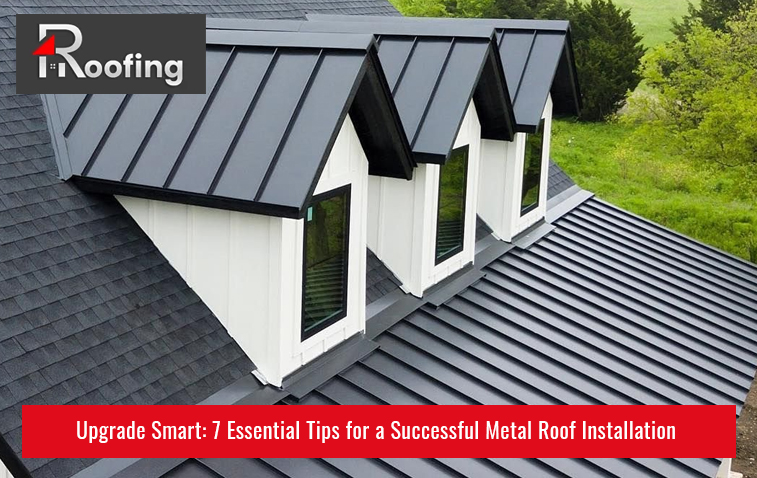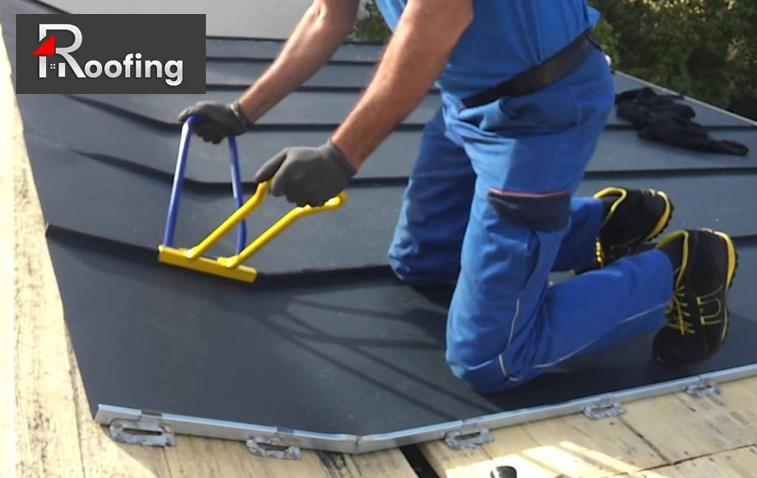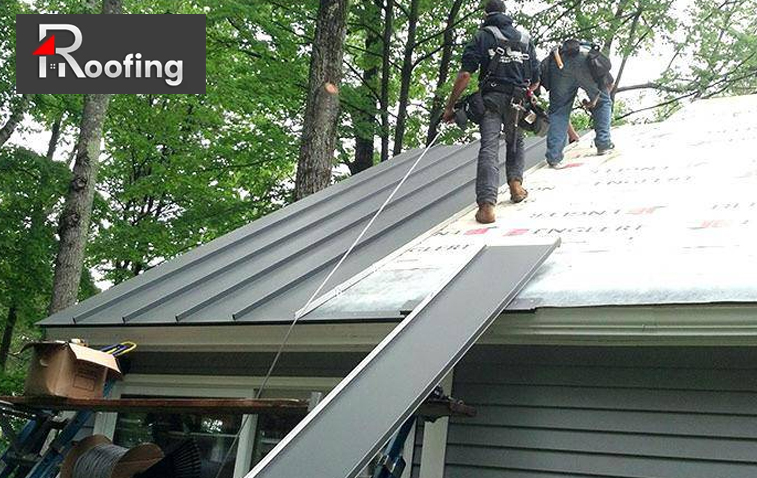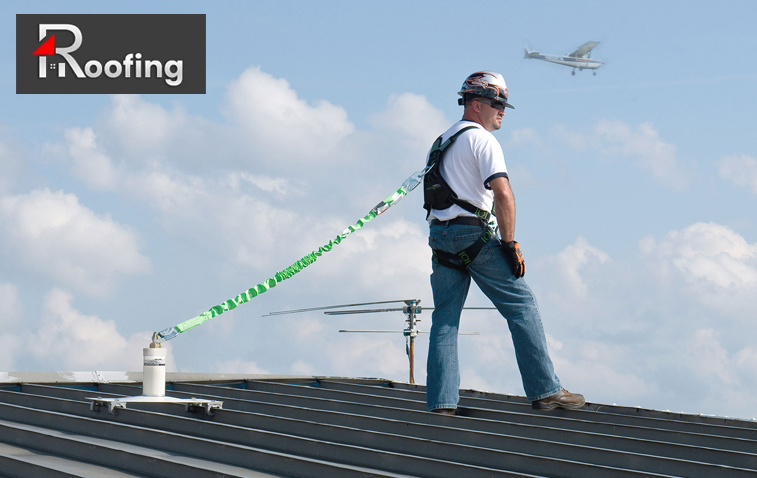Upgrade Smart: 7 Essential Tips for a Successful Metal Roof Installation
Upgrading to a metal roof is a smart investment that can significantly enhance the durability, energy efficiency, and aesthetic appeal of your home. With these tips for a successful metal roof installation, you can ensure a durable, weather-resistant, and low-maintenance upgrade that adds value and performance to your property.

However, the success of a metal roof installation depends on careful planning and execution. From selecting the right materials to ensuring proper ventilation, each step plays a crucial role in achieving a roof that not only looks great but also stands the test of time. Here are seven essential tips for a successful metal roof installation.
Tips for Choosing the Right Material for Metal Roof Installation
Choosing the right metal roofing material, with its unique set of advantages and characteristics, is crucial for applying essential tips to ensure a successful metal roof installation.
Key Actions:
- Assess Durability: Consider the durability of different metals such as steel, aluminum, copper, and zinc. Steel is robust and economical, while aluminum is lightweight and resistant to corrosion. Copper and zinc are premium options known for their longevity and unique aesthetic. Each metal type offers different levels of strength and resistance to environmental factors, so it’s essential to match the material to your specific needs.
- Climate Considerations: Choose a material that performs well in your local climate. For instance, aluminum is ideal for coastal areas due to its resistance to salt corrosion, while steel is excellent for regions with harsh weather conditions. Copper and zinc perform exceptionally well in various climates but come with a higher price tag.
- Aesthetic Preferences: Select a material that complements the architectural style of your home. Each metal type has a distinct appearance, and the right choice can enhance your home’s curb appeal. Consider the finish and color options available to match your home’s design.
Implementation Tips:
- Consult Experts: Seek advice from roofing professionals to understand the pros and cons of each material and determine the best option for your specific needs. Their expertise can help you navigate the choices and select a material that will perform well in your environment.
- Sample Testing: Obtain samples of different materials to see how they look and feel. This can help you make an informed decision based on both aesthetics and performance. Seeing the material in different lighting conditions can also give you a better idea of its appearance.
- Budget Planning: While cost should not be the only factor, it’s essential to choose a material that fits your budget while offering the desired benefits. Consider the long-term benefits and potential savings on maintenance and energy bills when making your decision.
Ensure Proper Ventilation
Proper ventilation is critical for the performance and longevity of your metal roof. Good ventilation prevents moisture buildup, which can lead to mold growth and structural damage.
Key Actions:
- Evaluate Current Ventilation: Assess your current attic and roof ventilation systems to determine if they are adequate. Look for signs of poor ventilation, such as excessive heat in the attic, moisture buildup, or a musty odor. Inadequate ventilation can lead to increased energy costs and damage to roofing materials.
- Install Ridge and Soffit Vents: Ridge vents along the peak of the roof and soffit vents under the eaves create a balanced airflow system that promotes efficient ventilation. These vents work together to draw cool air in through the soffits and expel hot air through the ridge vents, maintaining a consistent temperature.
- Consider Additional Ventilation Options: In some cases, additional ventilation methods such as gable vents or powered attic fans may be necessary to ensure proper airflow. These options can enhance ventilation in larger or more complex roof designs.
Implementation Tips:
- Professional Assessment: Have a professional evaluate your ventilation needs and recommend the best solutions. Properly installed ventilation can significantly extend the life of your roof by preventing moisture-related issues.
- Regular Maintenance: Keep vents clear of debris and ensure they are functioning correctly. Regular maintenance helps maintain optimal airflow and prevents issues related to poor ventilation. Periodic checks can ensure that your ventilation system continues to perform effectively.
- Balance Intake and Exhaust: Ensure a balance between intake and exhaust ventilation to promote effective airflow and prevent moisture problems. An imbalance can lead to insufficient ventilation, resulting in heat and moisture buildup.

Focus on Insulation
Insulation works hand-in-hand with ventilation to enhance the energy efficiency and comfort of your home. Proper insulation under a metal roof can reduce energy costs and maintain a consistent indoor temperature.
Key Actions:
- Evaluate Existing Insulation: Check the current insulation in your attic or roof space to determine if it is adequate. Look for gaps, compression, or signs of moisture damage. Inadequate insulation can lead to energy loss and increased heating and cooling costs.
- Install High-Quality Insulation: Choose high-quality insulation materials such as fiberglass batts, spray foam, or rigid foam boards. These materials provide excellent thermal resistance and can help reduce energy costs. Spray foam, in particular, offers superior air sealing and insulation properties.
- Ensure Proper Installation: Insulation should be installed correctly to avoid gaps and compression, which can reduce its effectiveness. Pay special attention to areas around vents, chimneys, and other penetrations. Proper installation ensures that the insulation performs as expected and maximizes energy efficiency.
Implementation Tips:
- Upgrade When Necessary: If your current insulation is inadequate, consider upgrading during the metal roof installation. This can improve energy efficiency and overall comfort. Upgrading insulation at the same time as installing a new roof can be more cost-effective and less disruptive.
- Use Vapor Barriers: In humid climates, use vapor barriers to prevent moisture from entering the insulation and causing mold or rot. Vapor barriers help maintain the integrity of the insulation and prevent moisture-related issues.
- Consult with Experts: Work with insulation professionals who can offer valuable metal roof installation tips to ensure that the materials and methods meet the specific needs of your home and climate.
Select the Appropriate Underlayment
The underlayment is a critical component of a metal roof system, providing an extra layer of protection against moisture and wind.
Key Actions:
- Choose the Right Type: Select an underlayment that is compatible with metal roofing. Options include synthetic underlayment, which offers superior moisture resistance, and traditional felt underlayment, which is more economical. Synthetic underlayment is generally more durable and resistant to tears and punctures.
- Consider the Climate: In areas prone to heavy rainfall or extreme temperatures, a high-performance synthetic underlayment may be the best choice due to its durability and water resistance. Synthetic materials often perform better under harsh conditions and provide longer-lasting protection.
- Ensure Proper Installation: The underlayment should be installed smoothly and without wrinkles to ensure effective protection. Overlaps and edges should be properly sealed to prevent water infiltration. Proper installation of the underlayment is crucial for its performance and longevity.
Implementation Tips:
- Use High-Quality Materials: Invest in high-quality underlayment materials that provide reliable protection and complement the metal roofing system. High-quality materials can offer better performance and longer-lasting protection.
- Follow Manufacturer Guidelines: Adhere to the manufacturer’s installation guidelines to ensure the underlayment performs as intended. Proper installation is key to achieving the desired protective benefits.
- Inspect Regularly: Periodically inspect the underlayment during roof maintenance to ensure it remains intact and effective. Regular checks can help identify any issues early and ensure the underlayment continues to protect your home.
Pay Attention to Fasteners and Seams
The fasteners and seams of a metal roof are potential weak points that require careful attention to prevent leaks and ensure structural integrity.
Key Actions:
- Choose Appropriate Fasteners: Use fasteners that are specifically designed for metal roofs. They should be made from corrosion-resistant materials and have rubber gaskets to seal out moisture. Corrosion-resistant fasteners ensure longevity and reduce the risk of leaks.
- Proper Fastener Placement: Follow the manufacturer’s recommendations for fastener placement to ensure the roof panels are securely attached. Improper placement can lead to leaks and structural issues. Fasteners should be evenly spaced and placed according to the specific design of the roof panels.
- Seal Seams Effectively: Use high-quality sealants and tapes to seal the seams between roof panels. This helps prevent water infiltration and enhances the roof’s durability. Properly sealed seams are essential for preventing leaks and maintaining the roof’s integrity.
Implementation Tips:
- Regular Inspection: Inspect fasteners and seams periodically to ensure they remain secure and in good condition. Replace any damaged or corroded fasteners promptly. Regular checks help identify and address issues before they become major problems.
- Use the Right Tools: Use the appropriate tools for installing fasteners to avoid over-tightening or under-tightening, which can compromise the roof’s integrity. Properly installed fasteners ensure a secure and durable roof.
- Sealant Maintenance: Reapply sealant as needed to maintain a watertight seal, especially in areas exposed to harsh weather conditions. Sealants can degrade over time, so regular maintenance is necessary to keep the roof sealed.
Consider Thermal Movement
Metal roofs expand and contract with temperature changes, which can affect the performance and longevity of the roof system.
Key Actions:
- Allow for Expansion and Contraction: Design the roof system to accommodate thermal movement. This includes using sliding clips or flexible fasteners that allow the panels to expand and contract without causing damage. Proper design helps prevent stress on the roof panels and reduces the risk of damage.
- Use Expansion Joints: In large roof areas, incorporate expansion joints to manage thermal movement and prevent stress on the panels. Expansion joints provide a controlled way for the roof to expand and contract, reducing the risk of buckling or warping.
- Monitor Temperature Changes: Be aware of how local temperature fluctuations can affect your roof and plan accordingly. Understanding the impact of temperature changes helps in designing a roof system that can handle these variations.
Implementation Tips:
- Consult with Experts: Work with roofing professionals who have experience with metal roofs and understand how to design systems that accommodate thermal movement. Expert advice ensures that the roof system is designed to handle thermal expansion and contraction effectively.
- Regular Monitoring: Monitor the roof for signs of thermal stress, such as buckling or warping, and address issues promptly. Regular checks help identify and address issues early, preventing more significant problems.
- Material Selection: Choose materials that have a proven track record of handling thermal movement effectively. Materials that can expand and contract without compromising their integrity ensure a longer-lasting roof.

Regular Maintenance and Inspection
Even the best-installed metal roof requires regular maintenance to ensure it continues to perform at its best.
Key Actions:
- Schedule Routine Inspections: Conduct regular inspections to identify and address potential issues before they become major problems. Look for signs of damage, wear, or corrosion. Regular inspections help maintain the roof’s integrity and prevent minor issues from escalating.
- Clean the Roof: Keep the roof clean by removing debris, leaves, and dirt that can trap moisture and cause corrosion. Regular cleaning helps maintain the roof’s appearance and performance.
- Address Issues Promptly: Repair any damage or issues as soon as they are identified to prevent further deterioration. Prompt repairs ensure that minor issues do not develop into significant problems.
Implementation Tips:
- Create a Maintenance Plan: Develop a maintenance schedule that includes regular inspections, cleaning, and repairs. Stick to this plan to keep your roof in top condition. A well-structured maintenance plan ensures that all aspects of the roof are regularly checked and maintained.
- Professional Help: Consider hiring a professional for annual inspections and maintenance to ensure all aspects of the roof are properly cared for. Professional inspections can identify issues that may not be visible to the untrained eye.
- Documentation: Keep records of all inspections, maintenance, and repairs to track the roof’s condition over time and identify recurring issues. Detailed documentation helps in managing the roof’s maintenance and identifying trends or recurring problems.
Upgrading to a metal roof is a significant investment that can offer numerous benefits, including durability, energy efficiency, and aesthetic appeal. By following these seven essential tips you can ensure a successful metal roof installation that provides long-lasting protection and value for your home. Thoughtful planning and attention to detail will help you maximize the benefits of your new metal roof and enjoy peace of mind knowing your home is well-protected.




